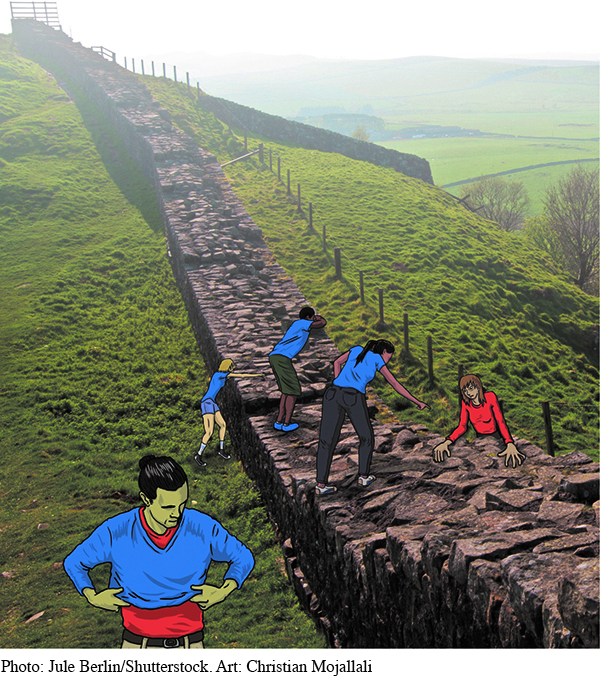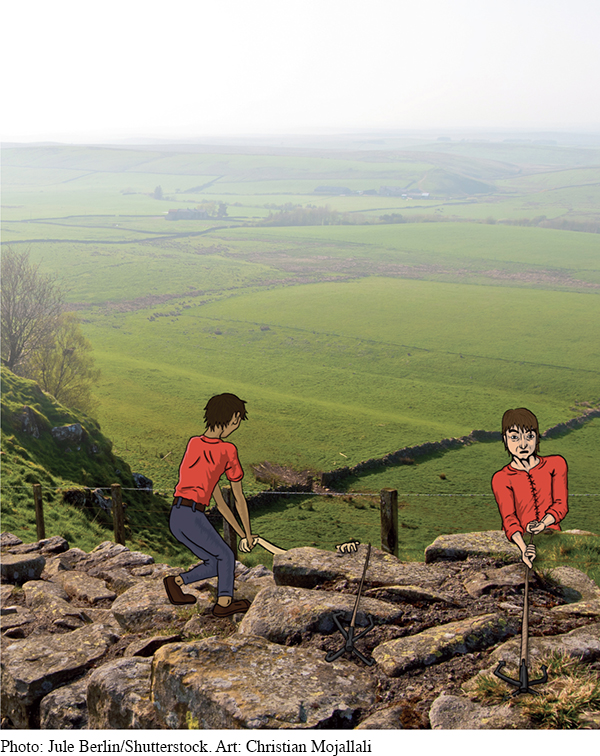534
8
Cultures in Conflict
What defines “culture”?
What causes cultures to come into conflict with each other?
Who gets to tell the story of a conflict?
How do cultures respond to change and to outsiders?
What is lost and gained by assimilating into a new culture?


535
In a commencement speech at Kenyon College in 2005, author David Foster Wallace began by saying:
There are these two young fish swimming along, and they happen to meet an older fish swimming the other way, who nods at them and says, “Morning, boys, how’s the water?” And the two young fish swim on for a bit, and then eventually one of them looks over at the other and goes, “What the hell is water?”
If at this moment, you’re worried that I plan to present myself here as the wise old fish explaining what water is to you younger fish, please don’t be. I am not the wise old fish. The immediate point of the fish story is that the most obvious, ubiquitous, important realities are often the ones that are the hardest to see and talk about.
536
“Culture” is one word for the “water” Wallace refers to. We are often so immersed in our own culture that it can be impossible for us to even notice it. If we speak a particular language, eat certain foods, practice a specific religion, we may begin to assume that everyone shares our culture, or if they don’t, there’s something wrong with them. And unfortunately, too often when cultures come into contact with each other, conflict is the result. Perhaps it is our inability to see the water (culture) around us that makes it difficult to see the world from other perspectives.
In this chapter, you will have an opportunity to consider not only what culture is, but what happens when different cultures come into contact with each other.
OPENING ACTIVITY 1
Take some time to describe the water you swim in by answering the following questions:
Is the language that you learned as a child also the first language of most people where you live and go to school? What is the effect of being able to speak multiple languages?
How are the clothes you wear on a typical day similar to or different from those of other people who are your age and gender? How are they similar to or different from the clothes worn by people who are older than you? What particular culture or subculture at your school, if any, do your clothes reflect?
In general, how do you view gender roles? Are there activities or behaviors that you believe are typical or appropriate for certain genders?
What is your racial, economic, or ethnic background? How often do you see people of your race, economic status, or ethnicity featured in the media—
or holding positions of authority in politics, business, or your school? How often do you interact with people of different racial, economic, or ethnic backgrounds? How do you get information about people of other cultural backgrounds? How are members of other groups represented in the media or in positions of authority at your school or in your community?
What are the holidays that you typically celebrate? Are the holidays—
and the ways that you celebrate them— similar to what you often see on television or in movies? Describe your religious practices, if any. How often do you talk to people of a different religion about your religious practices?
What are some of the foods that you typically eat? If you were to buy these foods in a grocery store, would you find them throughout the store or typically in the “ethnic foods” section?
What overall ideas or beliefs do you think define the culture in which you live?
OPENING ACTIVITY 2
Now, write about a time when you have experienced some kind of conflict that may have been caused by differences in culture. The conflict may not have led to a fight or even a disagreement, but it might have been the result of a misunderstanding. Reflect on the causes and results of the conflict, as well as how it might have been avoided in the first place.